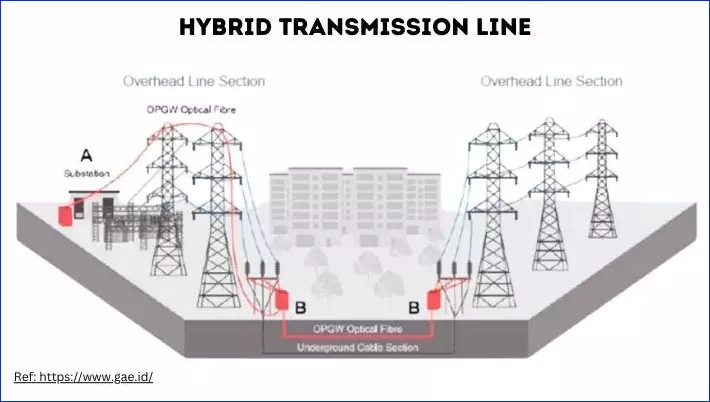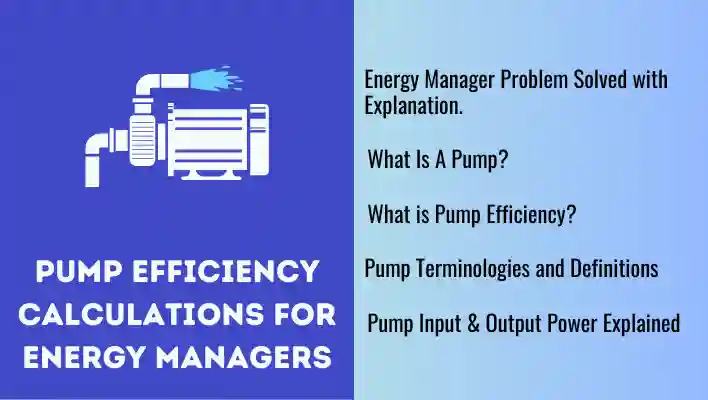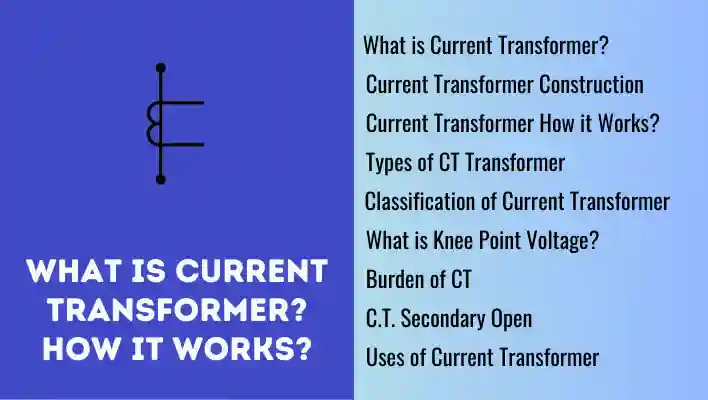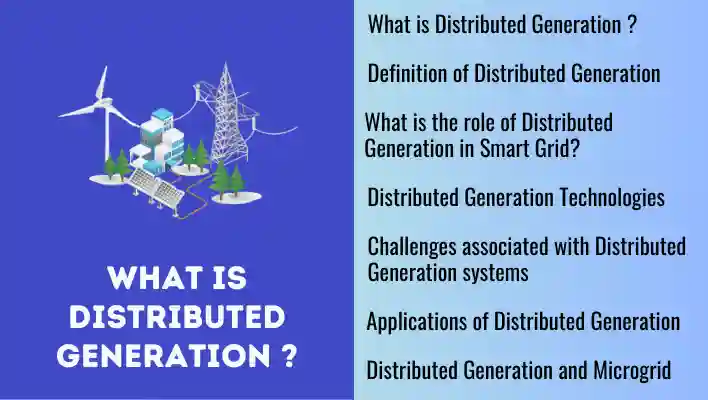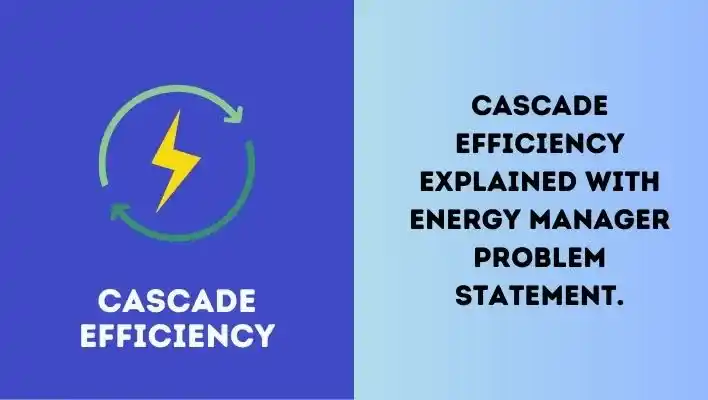Welcome to our comprehensive guide on power transmission lines! In this article, we will delve into the intricacies of power transmission lines, their significance and how they play a crucial role in the efficient distribution of electrical power. If you are looking to enhance your understanding of power transmission lines and gain insights into their functionalities, you’ve come to the right place.
What are power transmission lines?
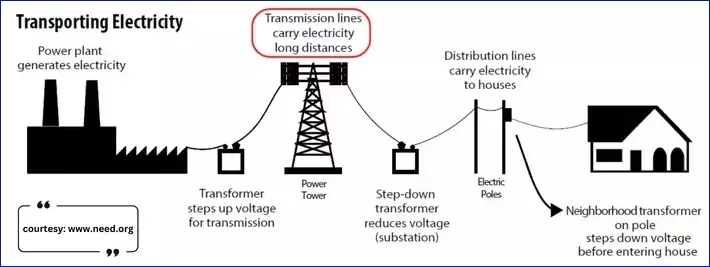
Power transmission lines are the lifeline of our electrical grid, enabling the efficient and reliable delivery of electricity to our homes, businesses, and communities.
These lines are not just ordinary cables but are the backbone of our power infrastructure, built to transport high-voltage electrical energy over long distances.
Let me tell you why they are so important and how they benefit us all.
First and foremost, power transmission lines serve as the vital link between power generation sources and distribution networks.
They connect power plants that generate electricity by using different energy sources, to places where it’s needed, like substations or other points where the voltage is changed for distribution to homes and businesses.
This means that the electricity produced at the source can reach us, the consumers, without interruptions.
These transmission lines operate at high voltages, often reaching hundreds of thousands of volts.
Why is this important?
Well, higher voltages help minimize energy losses during the transmission process. By reducing the current required for a given power level, we can significantly decrease resistive losses in the conductors.
As a result, more electricity reaches its destination, and fewer resources are wasted.
The conductors themselves, made of sturdy materials like aluminum or copper and are often bundled together to enhance the power-carrying capacity of the lines.
This means that more electricity can flow through them, enabling us to meet the ever-increasing demand for power in our modern society.
To ensure the safety and reliability of these transmission lines, they are supported by towers or poles that elevate them above the ground.
These structures are not just there for show; they are engineered to withstand extreme weather conditions, such as powerful winds and heavy ice loads.
By keeping the conductors insulated and protected, these towers and poles ensure that electricity keeps flowing, even in the face of challenging environmental factors.
While power transmission lines are impressive, it’s important to distinguish them from distribution lines.
Transmission lines carry high-voltage electricity over long distances, while distribution lines operate at lower voltages within local areas, delivering electricity directly to our homes, businesses, and communities.
Together, they work in harmony to ensure that our energy needs are met efficiently and reliably.
So, the next time you switch on a light or power up your devices, take a moment to appreciate the power transmission lines that silently work behind the scenes, tirelessly delivering electricity to your doorstep.
They are the backbone of our modern power infrastructure, empowering us with a stable and reliable energy supply that drives our lives forward.
Also Read: Power Supply System | A Comprehensive Guide
Major components of Power transmission lines
The smooth operation of an power transmission line especially overhead lines relies heavily on its mechanical design. During the design and construction process, engineers prioritize ensuring that the power line possesses the mechanical strength to withstand even the harshest weather conditions.
The key components of a high-voltage overhead line include:
- Towers i.e. Line supports
- Conductors
- Insulators
- Substations
- ROW
Towers i.e. Line supports
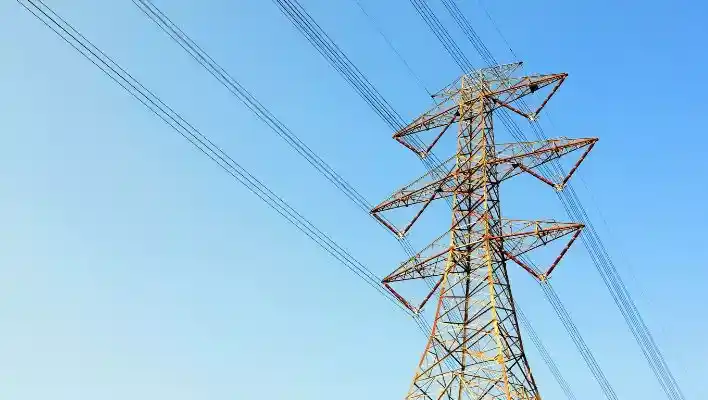
Transmission towers are those tall structures you often see along the countryside or stretching across vast landscapes. They’re not just there for show; they actually play a crucial role in our power transmission system.
First off, these towers are responsible for keeping the high-voltage conductors properly separated.
You see, if those energized lines were to come into direct contact with their surroundings or get too close to each other, It could cause a line to line faults or ground faults, and that’s definitely something that needs to be avoided.
To prevent that, the towers ensure there’s enough space between the conductors and the tower itself, as well as between the conductors themselves. This way the risk of electrical faults and potential disruptions are minimized.
Another important thing is that they’re our first line of defense when it comes to maintaining a reliable power transmission network.
They’re built to be sturdy and strong, capable of carrying the weight of the conductors and standing tall even in the face of severe storms or other natural disasters.
When it comes to the choice of line supports, different materials are employed based on specific requirements. Wooden poles, steel poles, R.C.C. poles (Reinforced Cement Concrete) and lattice steel towers are carefully selected considering factors such as voltage levels, expected lifespan, number of conductors, and maintenance costs.
Steel towers, in particular, emerge as the ideal choice for Extra High Voltage (EHV) and High Voltage (HV) transmission. Their exceptional durability and mechanical strength ensure a longer lifespan and enable them to withstand even the most challenging environmental conditions.
There are several types of towers each serving its purpose. Suspension towers, tension or dead-end towers and transposition towers all have their unique roles to play in the efficient and flexible operation of the transmission system. It’s like having a diverse team with specific skills, working together to make sure electricity flows smoothly from point A to point B.
Conductors
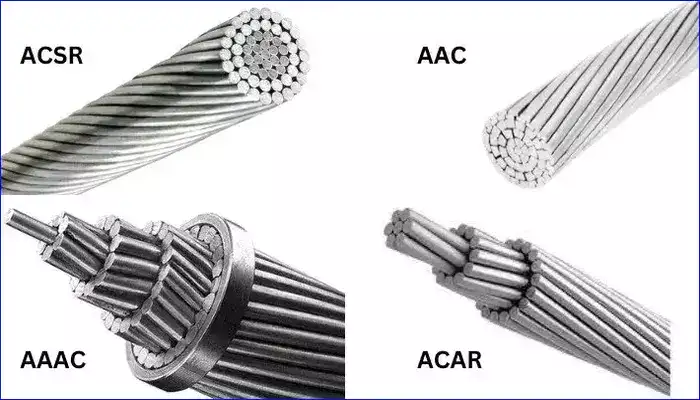
When it comes to choosing the right conductor for power transmission, few important factors are considered. Like the conductor’s material type, cross-sectional area and current rating all play a role in determining its power handling capacity.
In power systems, copper, steel, galvanized steel, cadmium copper and aluminum are commonly used as conductor materials. Each material has its own electrical and mechanical properties and utilities carefully select the conductor based on these characteristics.
While copper is often seen as the ideal conductor for transmission, aluminum conductors are often used for overhead lines.
Aluminum has some appealing advantages, like it’s lightweight, more cost-effective, and offers a larger diameter compared to copper. This larger diameter helps to reduce the undesired effects of corona, making it a practical choice for overhead lines.
Stranded conductors emerge as a compelling solution in the domain of power transmission.
These conductors are made by twisting multiple coil wires or strands of conductor material together to form a single conductor.
Stranded conductors exhibit remarkable capabilities of carrying high currents while providing increased flexibility compared to other solid conductors.
Another main reason to prefer stranded conductors is because they help reduce electrical stress and minimize the occurrence of the corona effect on the transmission line.
There are a few commonly used stranded conductor types:
- ACSR (Aluminum Conductor Steel Reinforced): This type consists of a central steel core surrounded by aluminum strands. It offers a good balance between strength and conductivity.
- AAC (All Aluminum Conductor): As the name suggests, this conductor is made entirely of aluminum. It’s a lightweight and cost-effective option for power systems.
- AAAC (All Aluminum Alloy Conductor): This conductor is composed of aluminum alloy strands, providing improved strength and conductivity compared to AAC. It’s a step up when we need even better performance.
- ACAR (Aluminum Conductor Alloy Reinforced): ACAR conductors combine aluminum alloy and steel strands, giving them enhanced mechanical strength. They are great for demanding transmission scenarios.
Insulators
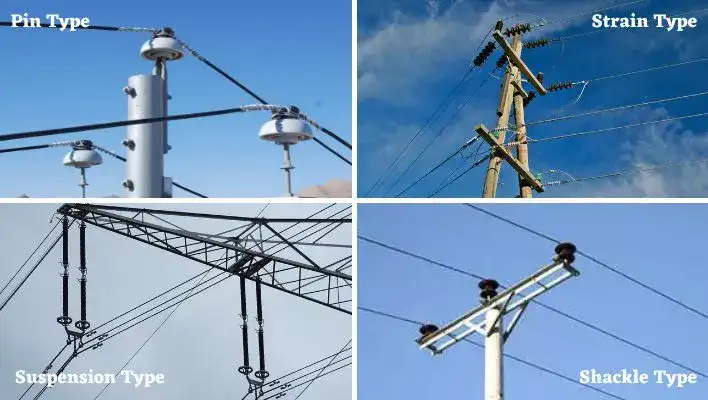
In power transmission, the designers make sure that there’s enough space between the conductors and the transmission tower and the ground. That’s where insulators come into play.
Insulators are like protective shields and they keep expensive equipment, such as switchgear and transformers, safe from the damage caused by over-voltages.
On the transmission towers, you’ll find these insulators positioned between the conductor and the cross arm of the tower. They’re carefully placed there to prevent the current flowing through the conductors from finding a path to the ground.
Insulators have specific ratings for both mechanical and electrical performance. These ratings, known as M & E ratings, indicate the point at which the insulator can no longer function effectively under the combined influence of mechanical load, voltage, and stress.
Insulators come in different types, classified based on the type of material used as a dielectric. The main classes are porcelain, glass and polymer.
But nowadays, composite insulators made of polymers are gaining popularity. They’re lighter in weight and more resilient compared to traditional porcelain and glass insulators.
The most commonly used types of insulators are as follows:
- Pin type insulator
- Suspension type insulator
- Strain insulators
- Shackle insulators
Each type serves a specific purpose in the transmission system, ensuring effective insulation and safe operation.
Substation
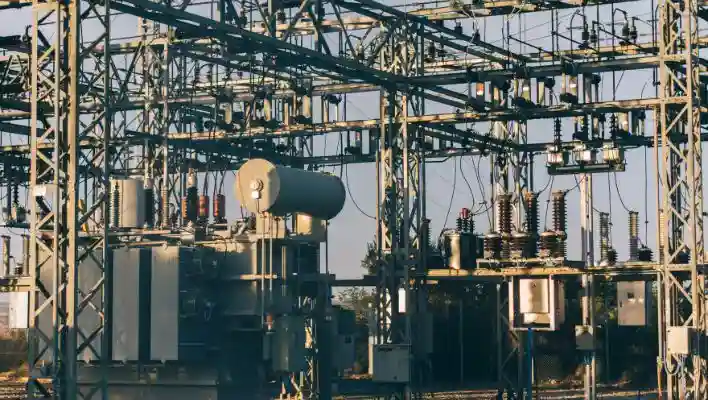
An electrical substation serves as the endpoint or starting point for power transmission lines. It acts as a vital hub where electricity transitions from one point of its journey to another.
At a substation, the voltage of the electricity is either stepped up or stepped down using transformers. Stepping up the voltage is necessary for long-distance transmission, as it reduces energy losses along the power transmission lines. Conversely, stepping down the voltage is required to match the voltage levels appropriate for distribution to consumers.
Substations also serve additional functions, such as controlling and protecting the electrical system. They house various equipment, including circuit breakers, switches, capacitors, and protective relays, which are responsible for monitoring and managing the flow of electricity, as well as ensuring the safety of the system.
ROW

A right-of-way (ROW) is a crucial but mostly passive element of power transmission lines. It serves as a protective space, creating a safety buffer between the high-voltage lines and the surrounding structures and vegetation.
In addition to this safety function, the ROW also serves as a pathway for ground-based inspections and grants access to transmission towers and other line components for necessary repairs.
Failing to maintain an adequate ROW can lead to hazardous situations, including ground faults.
To ensure safety and operational efficiency, the ROW typically consists of native vegetation or carefully selected plants that exhibit favorable growth patterns, such as slow growth and low mature heights.
However, in certain instances, access roads may also form a part of the ROW, providing convenient access for repair and inspection vehicles.
What are the Types of Power Transmission Lines?
While many people commonly classify power transmission lines as short, medium or long based on their length and operating characteristics. But in my view, a more suitable way to categorize power transmission lines is by considering how they are installed, specifically as either overhead lines or underground lines.
By categorizing power transmission lines in overhead versus underground, we get a different perspective that could be valuable for understanding the unique characteristics and considerations associated with different types of transmission lines.
So here are the types of power transmission lines,
- Overhead Lines
- Underground Lines
- Hybrid Lines
Overhead Power transmission Lines
Overhead power lines or aerial power lines, are a method of transmitting electrical power through an open-air system. They consist of stranded conductors such as ACSR, AAC or AAAC, supported by structures such as towers or poles.
They can be categorized into three sub-types:
- AC (Alternating Current) Overhead Lines: AC overhead lines are used to transmit electrical energy in the form of alternating current. They consist of multiple conductors (usually three) bundled together, often called a “three-phase” system.
- DC (Direct Current) Overhead Lines: DC overhead lines are used for transmitting direct current. They typically consist of two conductors: a positive and a negative pole. DC lines are often used for long-distance transmission of power generated by sources such as offshore wind farms.
- High Voltage Direct Current (HVDC) Overhead Lines: HVDC overhead lines are designed specifically for high-voltage direct current transmission. They utilize advanced converter technology to convert AC power to DC power and vice versa. HVDC lines are known for their ability to transmit large amounts of power over very long distances with minimal losses.
Underground Power transmission Lines
Underground cables, as the name suggests, are cables that are installed below the surface rather than being suspended overhead.
They offer advantages such as reduced visual impact, lower electromagnetic field emissions, and better protection against weather conditions.
However, they are more expensive to install, maintain, and repair compared to overhead lines.
- High Voltage Underground Cables (HVUC): HVUC are used for transmitting high-voltage electricity underground. They consist of multiple insulated conductors, often encased in a protective metal sheath and surrounded by layers of insulation, armor, and protective covering. HVUC are commonly used for urban distribution networks or short underground transmission sections.
- Submarine Cables: Submarine cables are a specific type of underground cables designed for transmitting power across bodies of water, such as seas or oceans. They are used to connect offshore power generation facilities (e.g., wind farms) to onshore grids. Submarine cables are designed to be highly durable, waterproof, and capable of withstanding the harsh marine environment.
Hybrid Power transmission Lines
Hybrid power transmission lines typically refer to power lines that combine different technologies or components to optimize the performance and reliability of the transmission system.
- HVDC and HVAC Integration: Hybridization may involve integrating High Voltage Direct Current (HVDC) and High Voltage Alternating Current (HVAC) technologies within the same transmission system. This integration aims to leverage the advantages of HVDC, such as lower transmission losses over long distances, while maintaining the benefits of HVAC for local distribution.
- Renewable Energy Integration: Hybrid power transmission lines can be designed to integrate renewable energy sources such as solar and wind. This involves combining traditional transmission infrastructure with technologies like HVDC to efficiently transmit power generated from remote renewable energy sites.
- Energy Storage Integration: The integration of energy storage systems, such as batteries, into power transmission networks can be considered a form of hybridization. These systems help manage fluctuations in power generation and demand, improving the overall stability and reliability of the grid.
Power Transmission Line Parameters
The performance of power transmission lines is influenced by key parameters that are uniformly distributed along its length, making it a distributed parameter system. The four main parameters are resistance, inductance, capacitance, and shunt conductance.
- Resistance and Inductance: Resistance (R) is the opposition to current flow, and inductance (L) is the property that induces an electromotive force (emf) in response to changing current. Together, they form the series impedance of the transmission line. The induced emf resists current flow, and this parameter is known as line inductance.
- Capacitance: Capacitance (C) arises due to the dielectric medium (such as air) between conductors. It stores electrical energy and is defined as the ratio of charge to potential difference. While capacitance is negligible in short transmission lines, it becomes a critical parameter in long lines, impacting efficiency, voltage regulation, power factor, and system stability.
- Shunt Conductance: Shunt conductance (G) is the flow of leakage current between conductors, facilitated by the dielectric imperfections in the surrounding medium (usually air). This leakage current, influenced by atmospheric conditions and environmental factors like moisture and pollution, is distributed uniformly along the entire length of the line. Shunt conductance is represented by the symbol Y and is measured in Siemens.
In summary, the distributed nature of these parameters along the power transmission lines contributes to its overall characteristics. Line inductance opposes changes in current, capacitance influences energy storage and system behavior, and shunt conductance accounts for leakage current. Understanding and modeling these parameters are crucial for analyzing, designing, and optimizing the performance of transmission lines in electrical power systems.
The Role of Power Transmission Lines
The role of power transmission lines is crucial in the electrical grid, as they play a vital role in delivering electricity from power generation sources to consumers. Here are some key reasons highlighting the importance of power transmission lines:
Efficient Energy Transfer: Power transmission lines are designed to transmit electricity over long distances with minimal losses. By using high-voltage transmission, the amount of current required to transmit a given amount of power can be reduced, thereby minimizing resistive losses in the transmission process. This efficiency ensures that a larger proportion of the generated electrical energy reaches the end users.
Reliable Power Supply: Transmission lines are responsible for delivering electricity from power generation sources (such as coal, natural gas, nuclear, wind, or solar power plants) to distribution networks and ultimately to homes, businesses, and industries. They enable a reliable power supply by connecting different regions and ensuring a balanced load distribution. This redundancy helps prevent blackouts and ensures that power demands can be met even in case of equipment failures or maintenance work.
Support for Renewable Energy: Power transmission lines are crucial for the integration of renewable energy sources into the grid. Renewable energy generation, such as wind and solar, often occurs in remote locations where the resource availability is high. Transmission lines enable the transport of this clean energy to population centers where it is needed. They facilitate the expansion of renewable energy capacity and contribute to reducing greenhouse gas emissions and mitigating climate change.
Grid Flexibility and Stability: Transmission lines provide flexibility in managing the electrical grid. They allow for the transfer of surplus power from regions with excess generation capacity to areas experiencing high demand. This balancing of power supply and demand helps stabilize the grid and ensures a continuous and reliable electricity supply.
Economic Development: Power transmission infrastructure is essential for economic growth and development. It enables the establishment of industries, businesses, and residential areas in regions that may not have their own power generation facilities. Transmission lines promote industrialization, attract investment, and create employment opportunities, leading to economic progress and improved living standards.
Interconnection and Grid Resilience: Power transmission lines enable the interconnection of multiple power systems, forming regional or national grids. This interconnection enhances grid resilience and enables the sharing of power resources. In the event of disruptions or emergencies in one area, power can be rerouted from other regions to ensure continuity of essential services.
In summary, power transmission lines are vital for efficient, reliable, and sustainable power delivery. They support economic growth, enable the integration of renewable energy, and ensure a stable electricity supply, contributing to the overall development and well-being of society.


